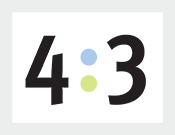Whether you work at a large corporation or own a small business, your company should be utilizing social media. Everyone is on it. And even if every single person is not on it, your target consumer probably is. In my opinion, here are the most important tips that you need to know.
1. Set goals and create a strategy to fit the target audience
It’s really difficult to measure success if you have nothing to compare it to. Decide who your target audience is and the best way to reach them. Then decide what goal you would like to achieve in a given amount of time (ex. we want to reach 100 more followers in the next two weeks).
2. Utilize analytics to know what best suits your audience
There are tons of ways to find out how successful or unsuccessful your posts are on different platforms. No one way is proven better than the other; it's a matter of preferance. Sometimes analytics are provided through the site and there are also third-party analyzers. Use as many or as few as you’d like but definitely make sure you always do three things. Read it. Comprehend it. Take action to make the next report even better.
3. Use Twitter to converse and not to simply push content
Twitter is such a vital tool. You are able to do more than just share information. You can gather information and build loyalty. No one likes being talked at. It is more effective to have a conversation than to lecture. Definitely stay active on social media with links, ideas, opinions, office happenings, etc. Undoubtedly, the most important thing about twitter is the ability to engage your audience and have a conversation with them. Understand their thoughts and what they would like to see from your company. It will help you reevaluate your goals and keep you on track!
4. Live by “A picture is worth a thousand words”
In research done to predict the ways and trends of social media, one thing is ubiquitous: Pictures in your content gets more attention. One Hubspot blog claimed that photos on Facebook generated more than double the amount of comments or likes on a post without photos. Twitter had the same results with increased retweets, site visits and clicks if the tweet had a photo.
My personal favorite way to share my photos on social media is through Instagram although there are several avenues that can be utilized to post pictures.
5. Use Pinterest to demonstrate your expertise and creativity
Although Pinterest is really popular for being a DIY hub, people use it every day for business. Creating pins that will bring traffic back to your site is imperative. Yes, you can still pin things from other sites but it is important to show that you can back up all of your ideas and that you are the expert. I would argue everyone can find a place on Pinterest. From greens-keepers to insurance tips, Pinterest has it all.
6. Don’t let your Facebook be boring
Getting consumers to like your page is a battle in itself, to grab their attention is another battle all together. This, much like Pinterest, will need your creativity. On your personal Facebook, it is acceptable to post what you ate and how you are feeling about life. Business pages are quite different. You want your business page to engage the reader and get them to your site and to remember your name above all others. Giving promotional discounts, posting videos from your YouTube account and even asking questions are just some ways to engage your audience.
I really liked this article posted by Driving Business Online which listed 20 ways to spice up your business page!
7. Promote a healthy dose of daily information but only provide good content
If you go to a company’s twitter account and they haven’t tweeted for some time, it could reflect poorly on them. On the other hand, if they tweet daily about sweet nothings, it could be equally as annoying and in turn, they may lose followers.
Unfortunately, there is no exact formula to fix this issue of balance. My best advice is to go back to your plan and strategize. With your audience in mind, what kind of content do they want and on what sites? How often do they look at those platforms? These questions can often be answered by using analytics. You have to cater to the needs of your consumers.
8. Utilize email too!
This one is simple. Always add emails to your database. Always utilize those emails to get out information.
9. Remaining open and on top of emerging social platforms while learning to utilize them to their greatest potential
The fact of the matter is that social media goes out of style fast. As soon as you get acquainted and comfortable; it’s changing. You have to be willing to roll with the punches and learn new platforms. This does not mean you have to use every single one for your business. However, you should have a general idea of what it does and how to navigate it. Even platforms that you think won’t do you any good, for example Snapchat, if you keep an open mind you may find a way to utilize it to your advantage (check out its new geo-filters. What a fun way to market your brand).
10. Isn’t this always the last point in a list like this? Have fun!
If social media is part of your business, well, that is fun in itself. But work takes up most of your life, and life is too short anyway to not have fun. Post informative, and fun, content.



